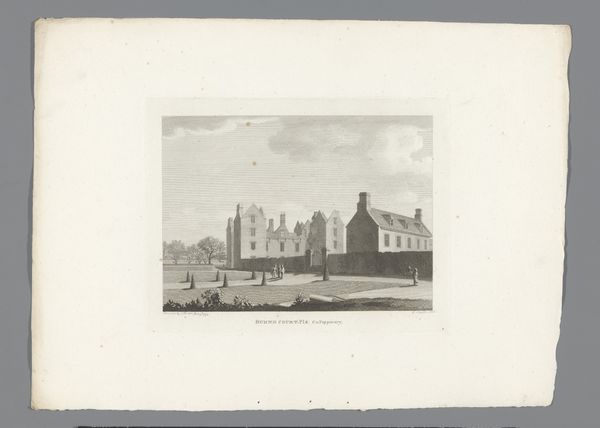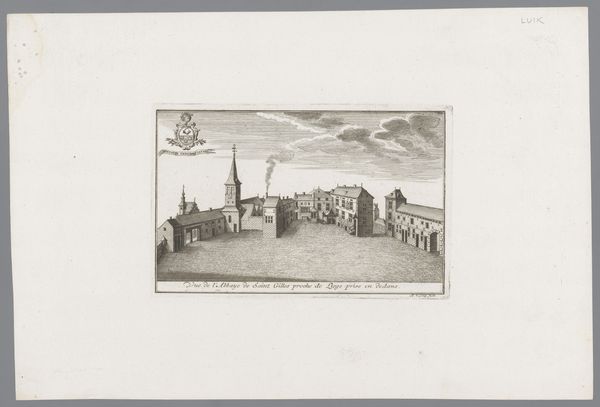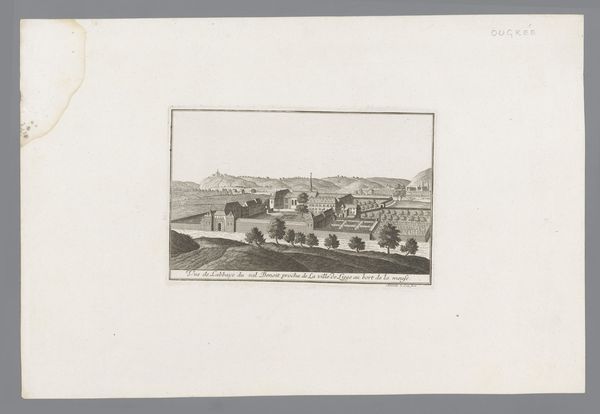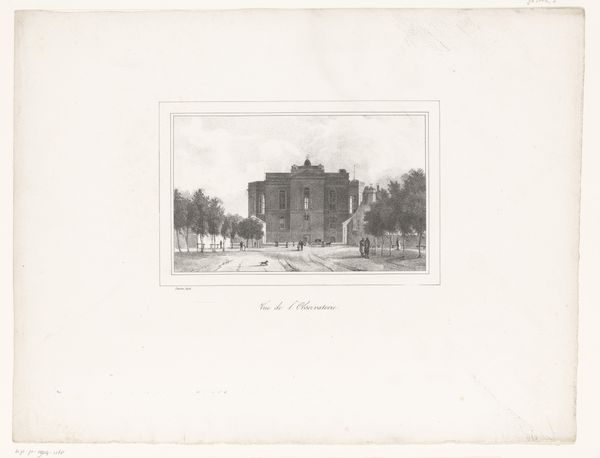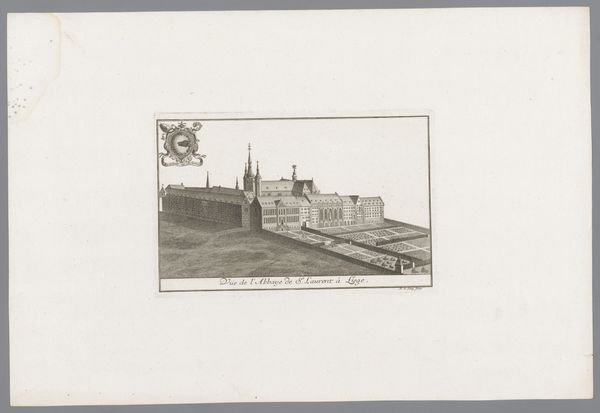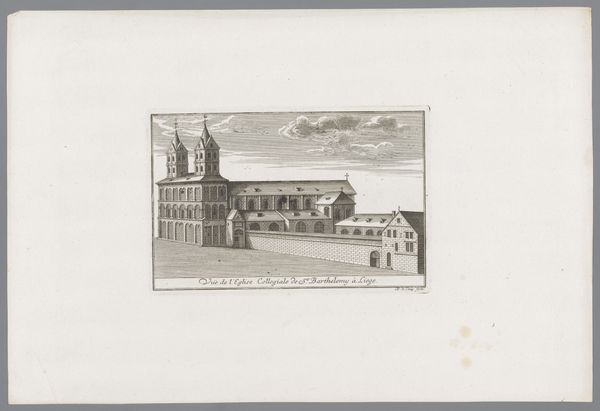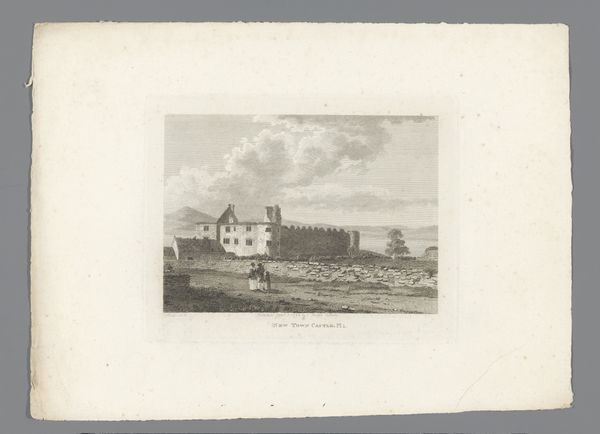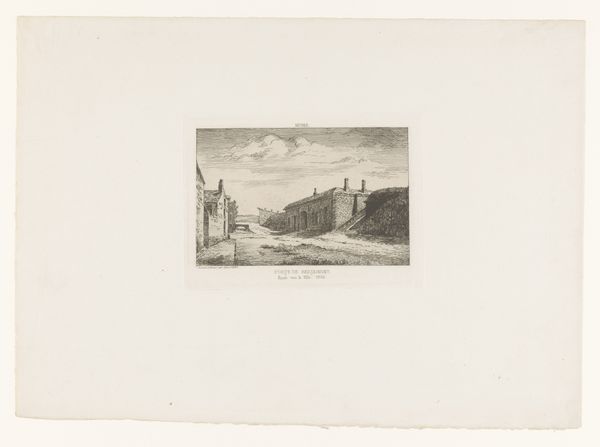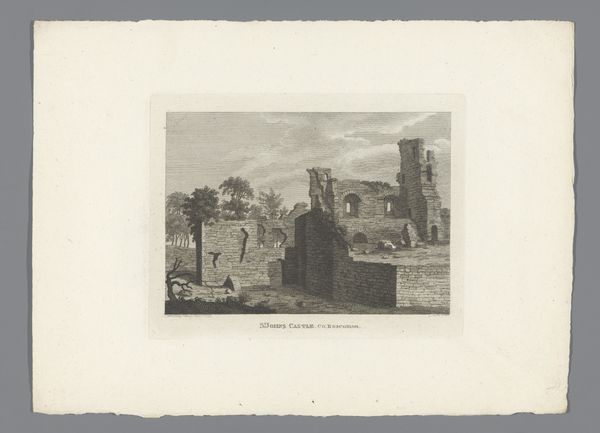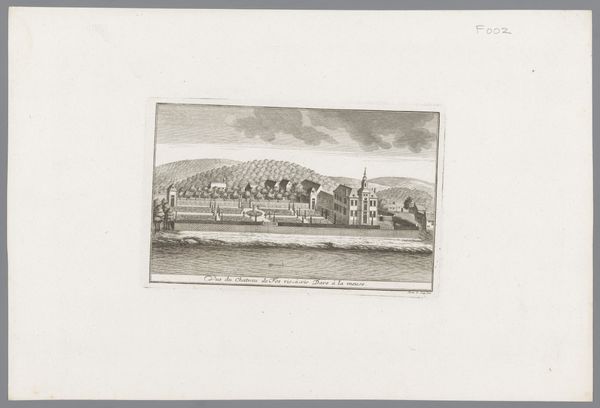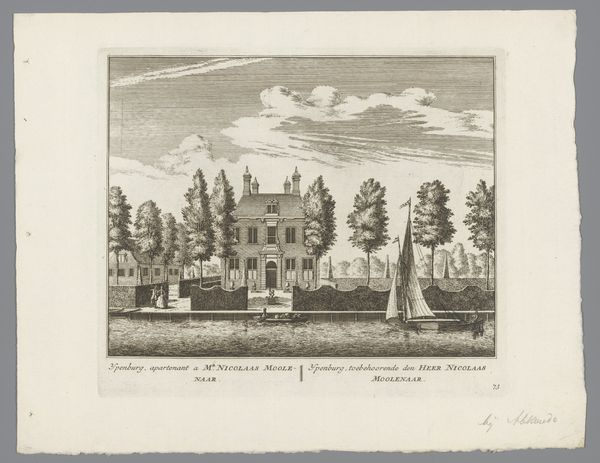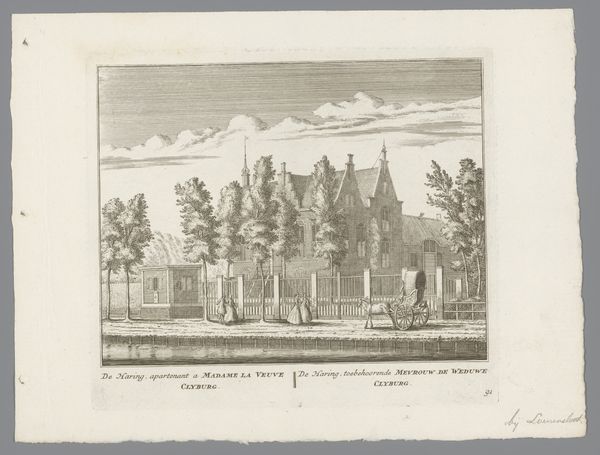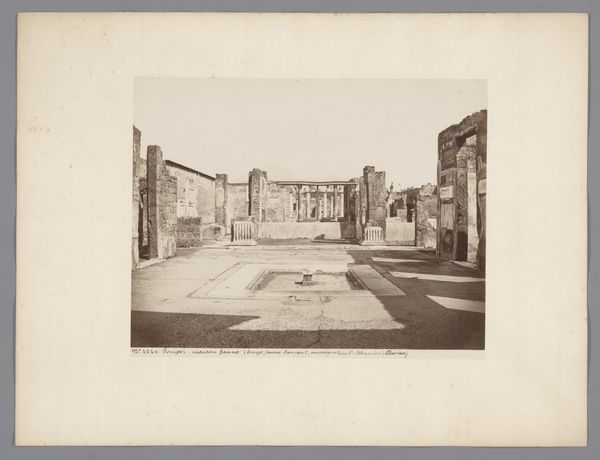
print, etching, engraving
#
baroque
# print
#
etching
#
landscape
#
cityscape
#
engraving
Dimensions: height 146 mm, width 218 mm
Copyright: Rijks Museum: Open Domain
Curator: Take a look at this cityscape, likely created between 1738 and 1744. It's titled “Gezicht op het marktplein en stadhuis van Luik,” rendered through etching and engraving. Editor: My first impression is the overwhelming stillness, despite the subject being a bustling marketplace. The emptiness feels almost… theatrical, like a stage set. Curator: The image presents the Place du Marché, dominated by the town hall and several fountains. Prints like these played a crucial role, of course, in shaping and circulating civic pride. This bird's-eye perspective lends a sense of authority and control to the urban space. Editor: I see the baroque architectural details, and you’re right—that higher perspective seems to give the viewer power. What really grabs me are the fountains. The water itself isn’t pictured, but those ornate structures almost symbolize prosperity, a continuous flow of wealth and resources into the city. The absence of people could be seen to enforce that even more; as if the fountains belong to all and, simultaneously, to no one. Curator: That resonates with the sociopolitical climate of the period, especially with regards to urban planning and civic identity. These meticulously detailed prints often served to reinforce ideals of order and progress within the urban landscape. We must remember that in reality, these would be places where differing social classes rubbed against one another, not that they would've resembled anything close to this… well, "still life" we see here. Editor: Yes, absolutely. The lack of activity might also heighten the intended message of civic order and the symbolic weight of architecture, devoid of human 'clutter.' This reminds us of the symbolic sanitization, for lack of a better term, inherent in visual representation. Every city represented in artwork, particularly in the early modern period, becomes a carefully chosen symbol. Curator: It truly is an object that allows one to reflect on how we view and idealize our urban spaces, and, further, our political views surrounding said places. Editor: Precisely. And to reflect upon the quiet language of civic power in the stones and the symbolic waters—frozen in time, but still so potent.
Comments
No comments
Be the first to comment and join the conversation on the ultimate creative platform.
